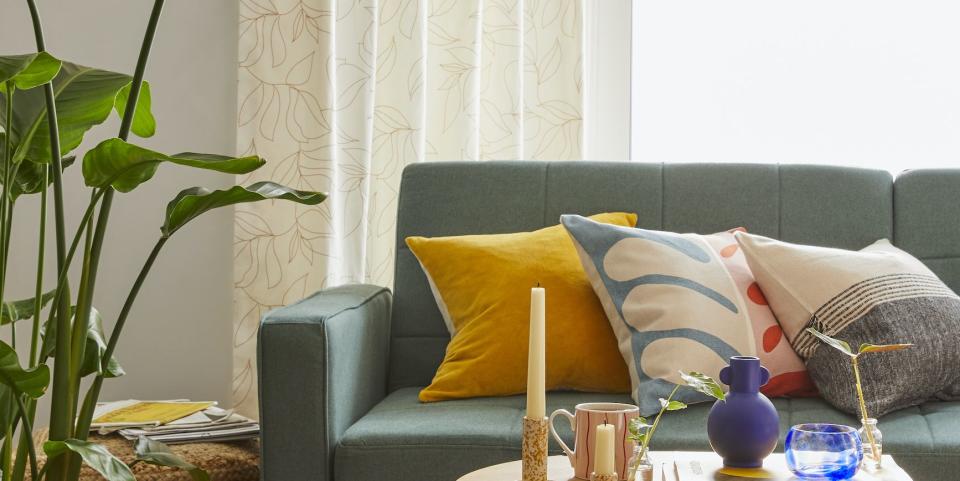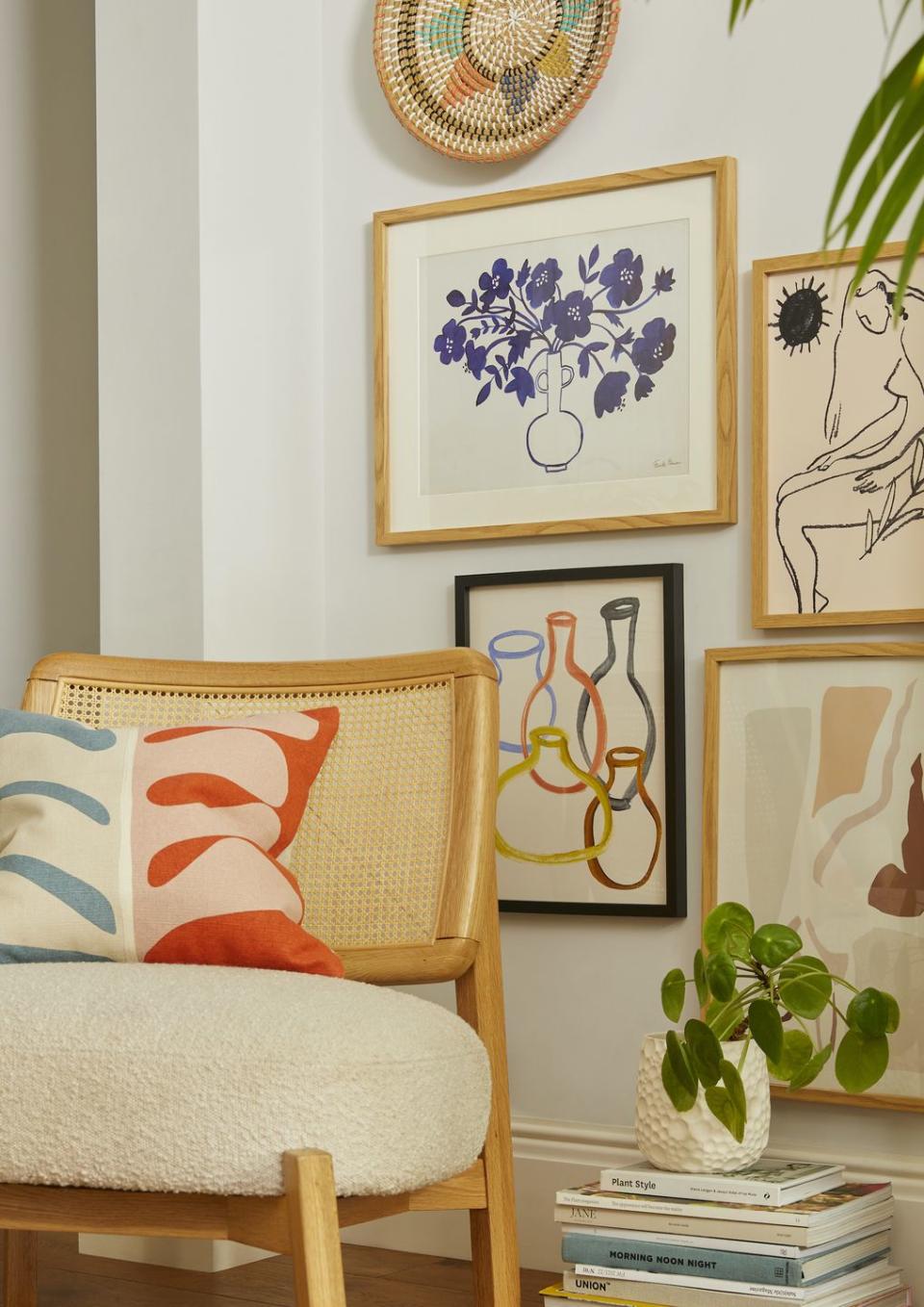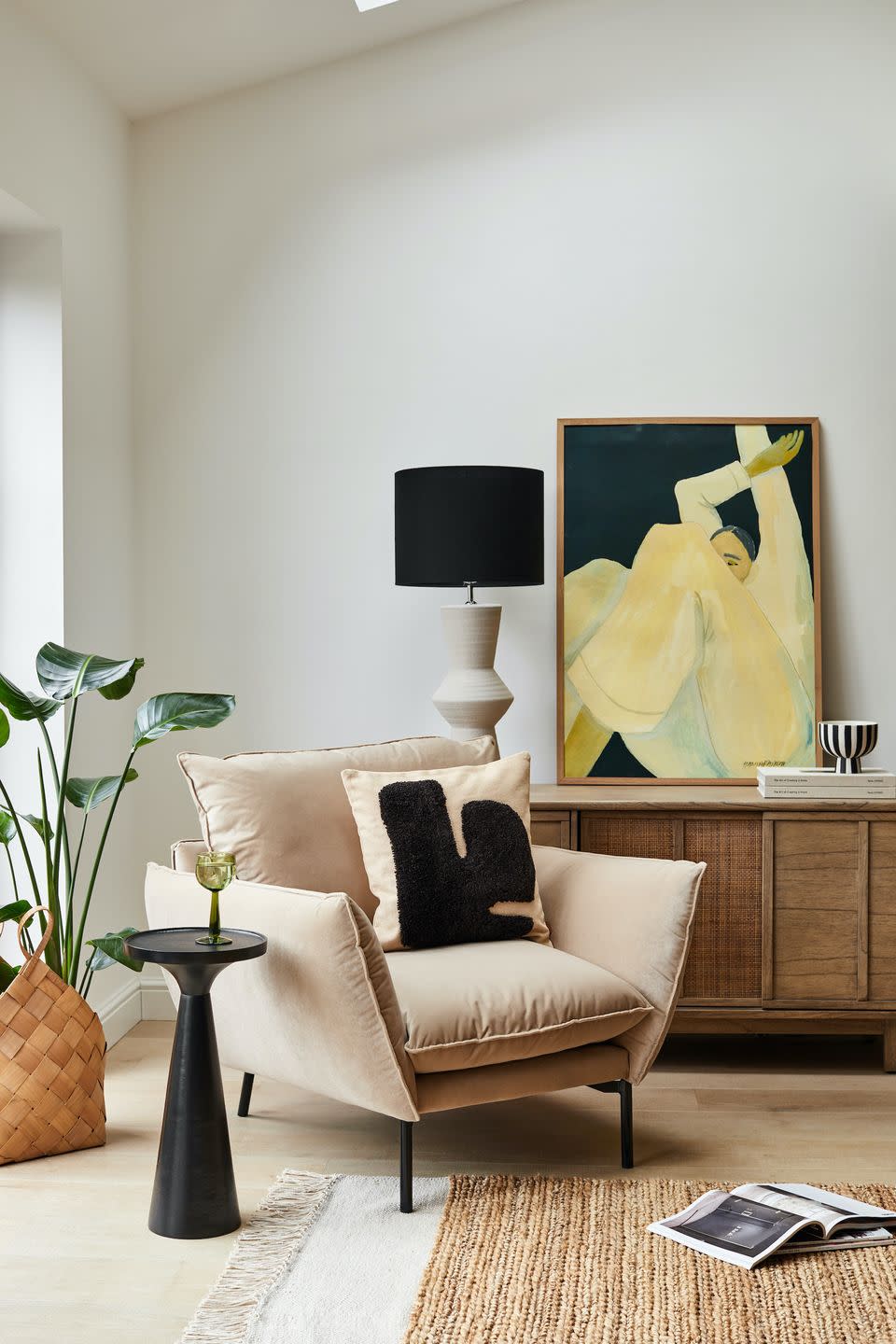
Homeownership has fallen in recent years, and according to results from the latest census, one in five households in England and Wales now rent – a figure which has doubled since 2001. That statistic increases dramatically in London, where more than half of households rent their home.
A common constraint facing renters is the inability to make the space feel personal, mainly due to stringent rules and restrictions in rental contracts. Marlena Kaminska, a designer at ValueLights, has shared six designer-approved and rental-friendly ways to make even the starkest of spaces feel like home.
1. Use light to create the illusion of space
If you're restricted in terms of space, there's still plenty you can do to make the most of what you have. One easy solution is to use lighting to trick the eye, making your home look brighter and feel more spacious, which is especially helpful if you're dealing with rooms that feel dark or cramped.

It all comes down to drawing the eye upwards, rather than across, when scanning the room. Marlena explains: 'A great trick to make a room seem bigger is to create a vertical path of vision. Using long pendant lights will draw the eye upwards, bringing attention to the height of the room rather than the width.
'Floor lamps are another easy and simple way to add vertical lines to your room. Choose a tall, sleek design, such as a tripod-style floor lamp, to save space and maximise the illusion of height.'
2. Invest in freestanding furniture
There are plenty of ways to furnish a home that don’t require hammering nails into the wall – a pet peeve of landlords everywhere.
Freestanding (rather than built-in) furniture is the perfect choice for renters, especially if you're faced with structural features you can't alter or remove. It also means you can take it with you once your contract has come to an end.

Many pieces of freestanding furniture have the dual benefit of adding interest to the space as well as acting as handy storage solutions. Certain pieces – sideboards and bookshelves, for example – also give you the chance to show off decor, which is key to creating a sense of personality in what is otherwise a blank canvas.
'Outside of its practicality, freestanding furniture also adds visual interest to your rooms through the scale and texture it can bring,' adds Marlena. 'For example, incorporating a large arching floor lamp to a living room creates shape and dimension without requiring any structural adjustments.'
Remember, if you’re staying in a short-term lease, consider the practicality of the pieces you invest in. The sturdier the furniture, the more difficult it will be to remove at the end of your tenancy.
3. Decide what to hide and what to highlight
Any renter who has moved around a few times will know exactly what a 'landlord special' is. Think gloss paint over beautiful solid wood, bricked-over period features, intriguing colour choices and questionable DIY jobs. Unfortunately, there's little you can do to rectify any of this, however, by highlighting the features you do love, you can gloss over (excuse the pun) and divert attention away from anything visually offensive.
Marlena suggests: 'Always try to identify a standout feature in your home, maybe a bay window, a fireplace or simply a piece of artwork you love, and then work to highlight this.'

If all else fails, work to hide what you dislike. A stylish rug is a perfect match for tired flooring, and a large throw will disguise even the worst sofa. Use tall lamps to bring light to dingy corners, and houseplants are guaranteed to brighten the space.
We recommend swapping out anything that can be easily put back at the end of your tenancy – curtains, lampshades, and artwork are all great examples. Just remember to keep the originals safely stored for when you do move out.
4. Prioritise ambience
The key to creating a space to call home is focusing on how the space makes you feel, aside from how it looks. Aim to create positive associations with your space, as this is what will make it feel homely.
Scented candles are a great place to start, especially if you opt for fragrances that you find comforting. Warm lighting will also create a cosy, sanctuary-like feel – crucial on dark evenings. Lastly, layer plenty of tactile soft furnishings to really amp up the laidback feel.
5. Make micro improvements
Small cosmetic improvements to your rental home can make a real difference to how you feel about the space, even if they seem minor. In fact, it's these small details that will really make your space feel like your own.

Marlena says: 'Give some TLC to the forgotten areas of your home that likely haven’t been upgraded for years. Micro improvements such as swapping your shower-head, replacing crusty outlet covers and putting up new lampshades are subtle changes which can make all the difference to your living experience.
'While your landlord will appreciate like-for-like replacements for products of a newer finish, if you’re swapping out any fixtures for aesthetic purposes alone, be sure to store the originals in a cupboard so you can reinstall them upon moving out.'
6. Talk to your landlord
No two landlords are the same and it may be that yours is more open to decorating than your contract initially suggests. It's worth communicating your plans in writing to the landlord (keep hold of this in order to protect both you and your deposit), and see if a compromise or arrangement can be made.
Before you move in, request your landlord do any vital maintenance work, and if possible, give it a cosmetic refresh – even if this only means a fresh lick of paint. If you don't ask, you'll never know.
If you’re in a long-term tenancy agreement, consider requesting decorating agreements to be added to your tenancy. Similarly, assuring your landlord that you will refill holes and touch-up paint may help sway them to allow you greater furnishing freedoms.
Follow House Beautiful on TikTok and Instagram.
You Might Also Like
Bagikan Berita Ini














0 Response to "6 easy ways to make a rented property feel like home - Yahoo Singapore News"
Post a Comment